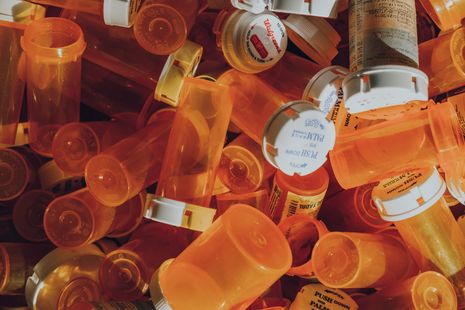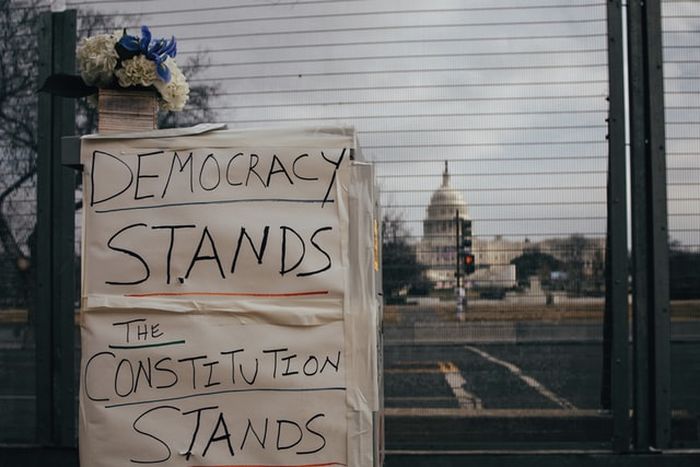‘A Tale of Two Cities’: the Dickensian truth of opioid ridden America
As the Opioid Epidemic worsens across the US, Lily Kemp details the failures of the welfare state to protect vulnerable Americans

The West Coast of America is the birthplace of Hollywood icons, movie magic, The Beach Boys, and the hippie movement. Yet, under the Hollywood veneers, lies a seedy underbelly of modern America. While it may be odd to compare the fictional world of Dickens and the very real streets of America’s West Coast, there is one striking similarity- its lack of a welfare state. Like in Dickens’ day, there was no free healthcare, or adequate state help to house the destitute and homeless.
Over the winter vacation, I visited my sister, who is studying on the West Coast. When I arrived in San Francisco, I had no idea I’d be staying in the drug region of the city, the notorious Tenderloin District. I was, at first, unphased by this prospect as living in South London, encountering drugs is not uncommon. However, the scale and extremity of the drugs being used was shocking. In San Francisco, two people a day die from drug overdoses, 60% of these occur in the Tenderloin district, an area of just over 1km squared, compared to the city’s total area of 121.48km squared.
“This tragic reality was exacerbated by the pandemic with twice the number of people dying from overdoses, than of Covid”
This tragic reality was exacerbated by the pandemic with twice the number of people dying from overdoses, than of Covid, in San Francisco at the peak of the pandemic. This was largely due to prescription drug shortages and issues, leading to higher street drug circulation, as well as the mental health impacts of the pandemic on these groups. San Francisco has a homeless population of approximately 8000 people. Los Angeles is almost eight times this, totalling 63,706 in 2020, 13% up from the 2019 count. Homeless people quite literally line the streets in their thousands.
On my second day in San Francisco, I did a spot check of how many needles and syringes I could count throughout the day. My record was five needles on day four; three of them were in people’s arms. I will be forever haunted by the image of a person’s body covered in a white sheet, leaving visible only a weathered hand, curled around a paper coffee cup, begging for change. You could not tell if the hand was dead or alive. Such are the scenes of The Tenderloin.
The Opioid Epidemic is nothing new in America. Starting in the late 1980s, pharmaceutical companies, such as Perdu Pharmaceuticals (owned by the Sackler family), gave the go-ahead to doctors that the opioids were safe to take as routine prescription medication. Since then, companies have benefited in the billions whilst roughly 90,000 people die per year, in America from an opioid-related overdose. What’s more, America’s privatised healthcare system has incentivised doctors to prescribe addictive pain relief medications, as they receive a commission from prescriptions. The results are patients that come in for a minor injury, or postoperative, and leave highly addicted.
“Activism is not enough to curb or help the masses of those affected by the fourth wave of this epidemic”
Such was the case for Nan Goldin, an American artist who became addicted to the prescribed OxyContin after hurting her wrist. She resorted to the dark web to buy the drug, once the doctors who originally prescribed her, refused to give her more drugs. Despite struggling deeply with painful withdrawal, now in recovery, Goldin started the group P.A.I.N (Prescription Addiction Intervention Now) in 2018. The group held ‘Die-In’ sit-ins in art galleries, in which protestors lie on the floor surrounded by empty prescription pill bottles. P.A.I.N brings global attention to the dirty money pumped into art institutions from pharmaceutical companies around the globe. Goldin argues that Sackler family money is ‘responsible for 250,000 deaths’, as well as philanthropic wings at The Louvre, MOMA New York, and our very own Tate and National Gallery. The Tate has since promised to not take donations from the Sackler family, in 2019.
However, activism is not enough to curb or help the masses of those affected by the fourth wave of this epidemic. San Francisco’s new Mayor, London Breed, has been praised for her efforts in housing the homeless. Since she came into office in 2018, the city has housed 1500 units of Permanent Supportive Housing (PSH) and expanded shelter options for people living outdoors. She has also pledged to shelter up to 430 individuals including permanent housing for 194 homeless residents. The largest provider of subsidised housing is Tenderloin Housing clinic (est 1980), which owns 24 properties in The Tenderloin area. Yet, both schemes are not large enough to support even a quarter of the homeless population. Yet, more fundamentally, whilst these housing options are subsidised, they are not free. Neither is the healthcare to rehabilitate them.
If you are addicted in 21st century America, it’s near impossible to get clean without means, and if you’re homeless, to find a stable place to live that’s affordable. The state is against you, it will prescribe you the drugs, and either profit off your recovery, or leave you to die. The ultimatum is fierce.
I’ll leave you with this, America’s discharged homeless soldiers, in their hundreds, live in tents along Veteran’s Avenue, Los Angeles. They still hang the American flag outside their tent doors, despite this same state leaving them unaided. We must stop glamorising the West Coast as a paragon of the American Dream. America today is sick because America is addicted.
 Features / Should I stay or should I go? Cambridge students and alumni reflect on how their memories stay with them15 December 2025
Features / Should I stay or should I go? Cambridge students and alumni reflect on how their memories stay with them15 December 2025 News / Cambridge study finds students learn better with notes than AI13 December 2025
News / Cambridge study finds students learn better with notes than AI13 December 2025 News / Dons warn PM about Vet School closure16 December 2025
News / Dons warn PM about Vet School closure16 December 2025 News / News In Brief: Michaelmas marriages, monogamous mammals, and messaging manipulation15 December 2025
News / News In Brief: Michaelmas marriages, monogamous mammals, and messaging manipulation15 December 2025 Comment / The magic of an eight-week term15 December 2025
Comment / The magic of an eight-week term15 December 2025









